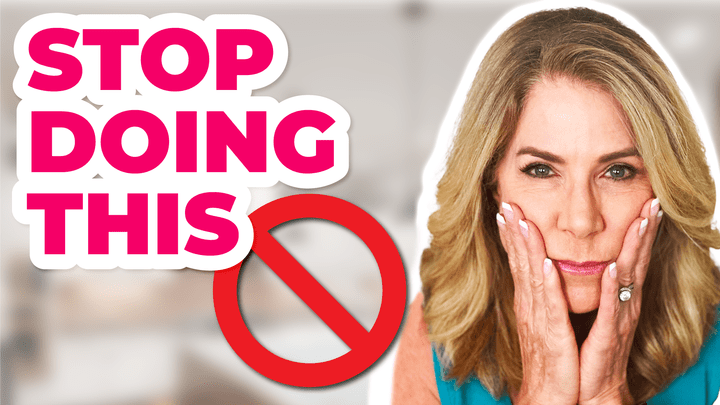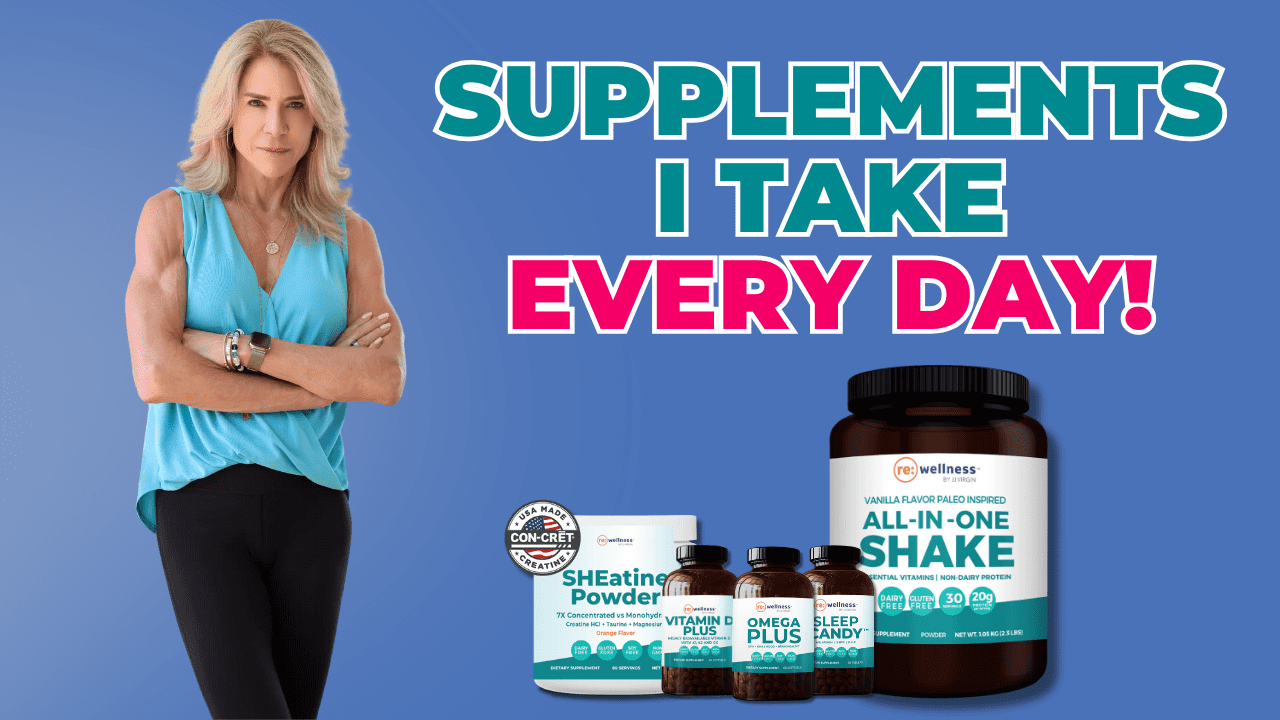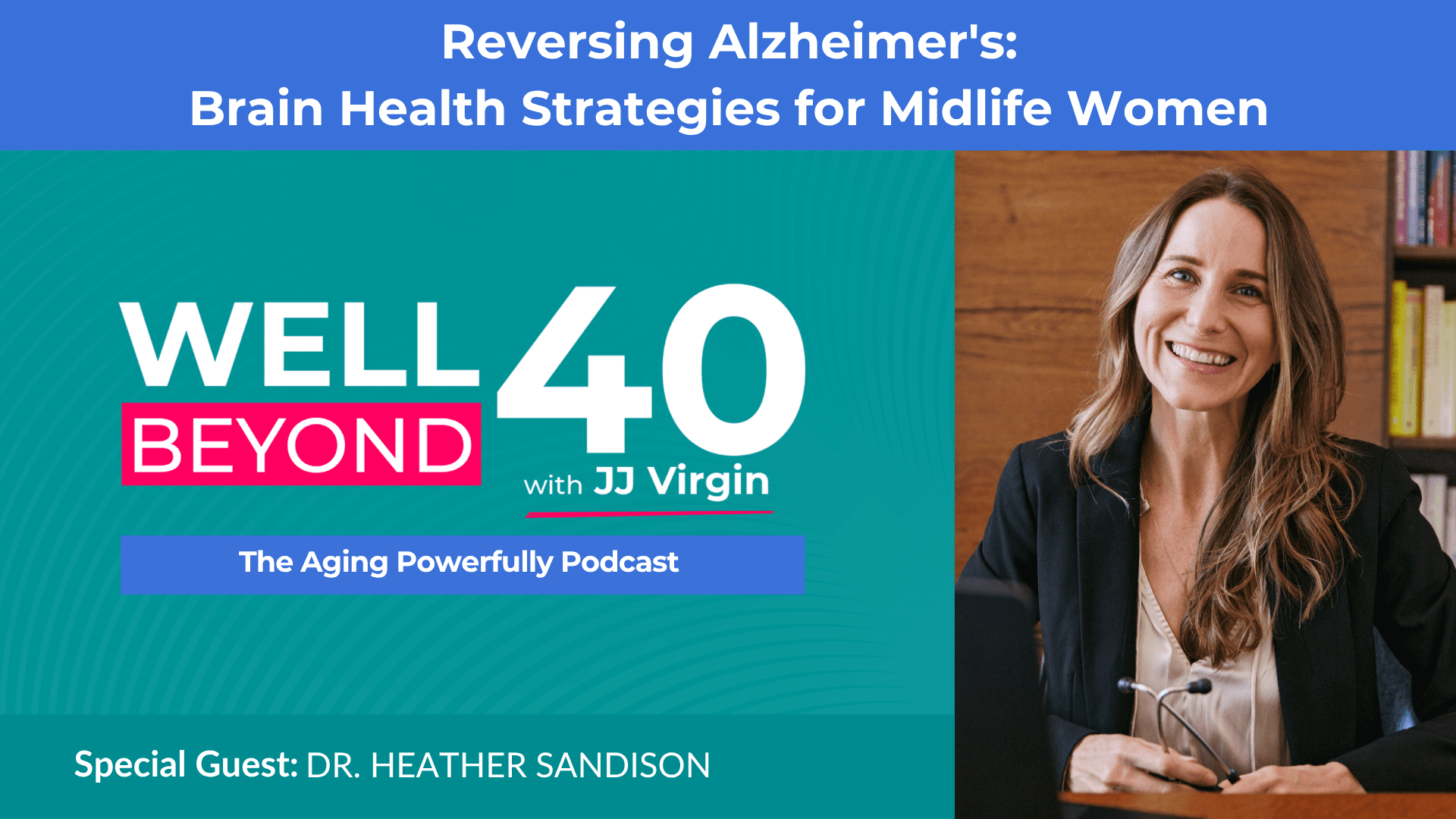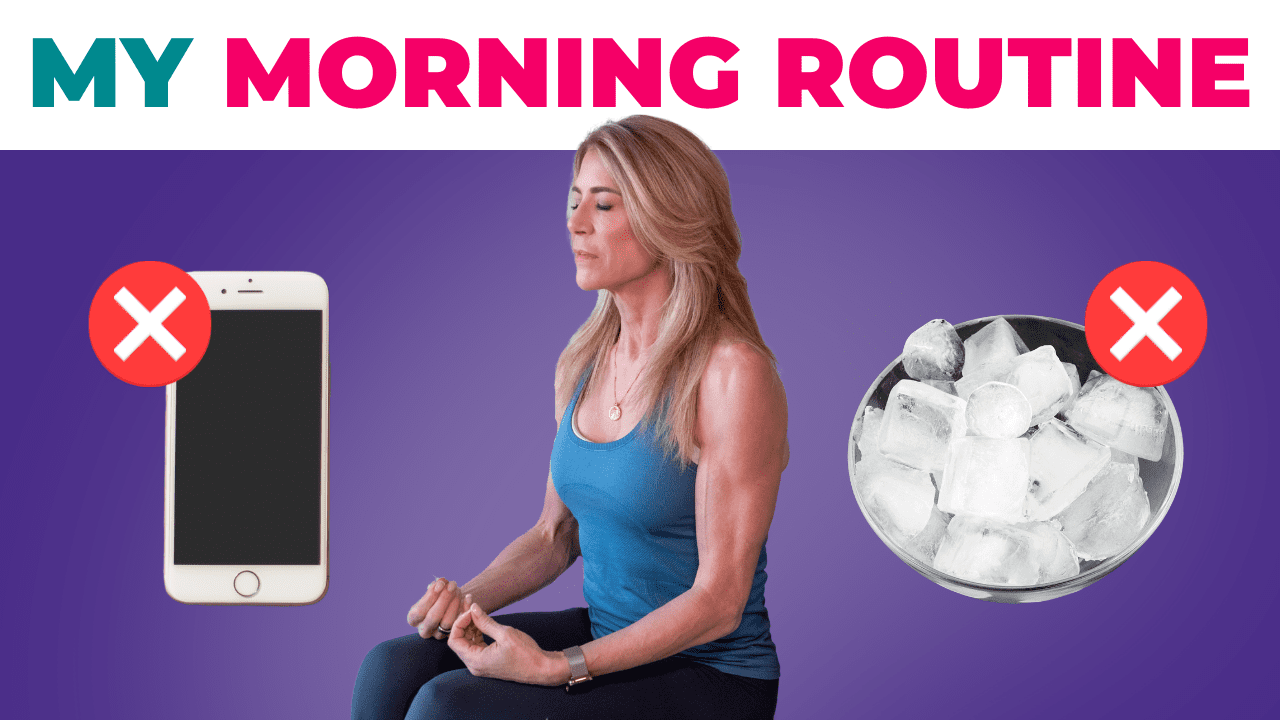How I Lost the Weight Without Even Trying
I recently decided I wanted to get in the best shape of my life for my 60th birthday. My original goal wasn’t even fat loss; I wanted to put on muscle and improve my overall fitness. But in the process of focusing on strength training, optimizing my nutrition, and making some key lifestyle tweaks, I ended up dropping 10 pounds and 5% body fat… without even trying!
In this episode, I’m sharing the surprising mindset shifts and practical strategies that made all the difference. You’ll learn why I actually INCREASED my calories at first, the reason I had to stop working out fasted, how changing my lazy evening wine-and-Netflix routine led to better self-care, and so much more. I’m also revealing the supplements I never skip even when I travel, and the metrics I track to make sure I’m building muscle and losing fat.
If you’re looking for motivation and guidance to get fit and feel your best at any age, this is the episode for you! It’s not about restriction or doing anything extreme, it’s about consistency, nourishing your body, and making sustainable lifestyle upgrades. I can’t wait to share what I’ve learned with you!
Timestamps
00:00:30 – Why I switched my focus from losing weight to building muscle
00:01:45 – The surprising way increasing calories helped me lose fat
00:03:10 – How I adjusted my workout routines for more strength and power
00:04:50 – The reason I stopped doing fasted morning workouts
00:06:15 – Traveling with supplements for consistency: what I never skip
00:08:30 – My new evening routine for better self-care and productivity
00:10:05 – The fat-loss power of always eating protein first
00:11:40 – The key metrics I track and why weight isn’t everything
Resources Mentioned in this episode
Reignite Wellness™ Vitamin D Plus
Reignite Wellness™ Collagen Peptides Powder
Reignite Wellness™ Bone Broth Protein Shakes
Reignite Wellness™ ElectroReplenish
Reignite Wellness™ Amino Power Powder
TRX Resistance Training Equipment: Free Shipping on all orders $99+
Take my 7-Day Eat Protein First Challenge
Reignite Wellness™ Magnesium Body CalmMagnesium
OmegaQuant Omega-3 Test use code XBNINBP7JM for 5% off
[MUSIC] I’m JJ Virgin, PhD dropout, sorry mom.
Turned four time New York Times bestselling author.
Yes, I’m a certified nutrition specialist, fitness hall of fame and I speak at health conferences and trainings around the globe.
But I’m driven by my insatiable curiosity and love of science to keep asking questions, digging for answers and sharing the information I uncover with as many people as I can.
And that’s why I created the Well Beyond 40 podcast to synthesize and simplify the science of health into actionable strategies to help you thrive.
In each episode, we’ll talk about what’s working in the world of wellness, from personalized nutrition and healing your metabolism to healthy aging and prescriptive fitness.
Join me on the journey to better health so you can love how you look and feel right now and have the energy to play full out at 100.
[MUSIC] So when I decided to get in the best shape of my life for turning 60, I actually didn’t plan to lose fat.
I really wanted to put on a little muscle and beef up my fitness.
But in the process, I ended up dropping 10 pounds and 5% body fat.
Here’s what I didn’t do to make this happen.
So the first thing that I stopped doing was focusing on losing weight.
The biggest focus that I had was I wanted to put on as much muscle as possible because I wanted to lay down a really good foundation because as we age, we tend to lose muscle.
But remember as we age, we start to lose up to 1% of our muscles starting around age 30, supposedly this starts to double at age 60.
We lose 2 to 4% of our strength and 6 to 8% of our power.
So I shifted my routine a bit to really start to focus on strength and power.
And what I was really looking at is what do I need to do now at age 58, 59, so that I can do all the things that I can do now when I’m 60, when I’m 70, when I’m 80, and that I’m in the top shape of my life so that I have a little margin for error, I can start to lose a little bit.
So here’s what’s interesting.
I started to do this.
As I started, I actually increased my calories a little bit and I pushed myself a lot harder at the gym.
And I actually went up 4 pounds to start.
Now thankfully, I was using a body composition scale and I could see over a couple months, this was literally over two months.
I put on 4 pounds, I think this month was probably about two months.
I put on 4 pounds, most of it was from muscle, a little bit from fat.
But that was my first things.
I stopped looking at losing weight.
I started looking at putting on muscle.
And the funniest part of all of that was as I started to put on more muscle, then I started to look at my body composition a little bit more and I started to just easily drop even more fat.
Wild, because again, now I had more muscle and I was doing more intense workouts.
And I was doing more intense workouts because I added in some power into my workouts.
I started putting in some sprints.
I started putting in some jumps.
I started putting in kettlebell work.
Things that involved a lot more speed, so it was a lot more intense.
The next thing that I did, and I had to do this because now that I was working out harder, I found that I couldn’t do a fast workout.
So I’d been playing around with intermittent fasting.
And here’s the thing.
I love Dr.
Sachin Pando’s work where he talks about eating by the clock and really eating by a normal circadian rhythm.
What does that mean?
That means that you want to stop eating about three hours before bed at least two hours, but three hours probably better.
And I’m assuming you’re going to bed at the normal times, they around 10 o’clock.
And then you want to eat about two hours after waking up in the morning.
I’ve been trying to push that a little bit later, going to the gym and instead of eating around 8 a.m., I was eating around 10.
And so I found, and I tested this for a couple months, when I go to the gym, I eat breakfast and go to the gym an hour later, I could work out so much harder.
Now if I’m doing a little cardio workout, I’m not worried about it.
I’ll do that fast, but when I’m going in for my hard work, weight workouts, especially now that I’m putting in some power into it, man.
Having a little protein carb fat breakfast, especially a little bit higher protein.
So my carb protein fat breakfast is about 50 grams of protein, maybe about 20 grams of carbs and a little bit of fat.
Boy, do I find that that really helps well.
And then when I come home from the gym, my lunch then is a great protein carb hit, so I can refuel my glycogen stores and make sure they have the amino acids I need to help with muscle protein synthesis.
Now the next thing is, I really made sure that I was not missing my powder supplements.
So here’s the thing, I’m really consistent with my pills.
And I make a little pill baggies, I travel with them, so I make sure that I get all the pills in, that I need my vitamin D, my fish oil, my magnesium, my might appear.
Where I was falling down was on my powders when I was traveling.
And what was a bummer is these are some really important things when you’re working on your body composition.
I’m talking my creatine and my collagen and my bone broth protein, which has a lot of collagen in it.
And so what I decided to do was start to travel with pill forms of creatine, but I also travel with my collagen.
So I travel with my collagen, I travel with my creatine, I travel with electrolytes, and I travel with essential amino acids, things that I’m very consistent with at home.
I loved book collagen in my coffee, I use creatine in my smoothie, and I go to the gym with my essential amino acids and my electrolytes, but I was not doing it when I was traveling.
So now I travel with all of those things and a big water bottle so that it’s very easy to do.
The next one, okay, this was my evening routine that I loved, but you can tell me, you’re like, “What, what are you doing?”
So I call my lazy evening routine.
You know, when you work from home, and I think probably a lot of you do too, so I work from home.
I’ve always worked for myself because I’m not employable.
I work from home and there’s a kind of blurred line as to when work stops and when, you know, non-work starts.
Like it’s kind of all one thing.
And so what we were doing to make that transition is opening a bottle of wine.
Now it was dry farms, but still.
Then we would have some wine, we’d make dinner, then we’d go flop on the couch and we’d watch Netflix.
And it was awesome, but you know what?
I kept looking at going, “This is really hours that are really unproductive, and I really want to get something in each night that’s better self-care, which isn’t happening when you drink, share a bottle of dry farm wines and flop on the couch.”
So here’s what we did instead.
We now make dinner and we’ll watch a little bit of Netflix, but we saved Netflix really for the sauna.
So we’ll go into our sunlight and sauna and watch Netflix.
And what I like to do when I’m home is I’ll either go do sauna or I’ll go walking, rucking, and I have a 10-pound walking rucking vest, a weighted vest that I can put on, or I’ll do a hot bath with magnesium salt or sometimes two of those.
But I make sure each night I get one self-care event in, and that works when I’m traveling because at least when I’m traveling, we can go out for a walk after dinner, which is pretty common.
But I make sure now that I do one of those things, and if I want that glass of wine, I have it after that.
So it’s always there as an option.
Should I want it?
I reach for the dry farm wines, which, of course, is lab tested and lower alcohol.
And the next one, and this is especially important.
Well, it’s important for all of us, and that is tracking because we know that we tend to underestimate what we eat by anywhere from 25 to 40%.
And it’s especially challenging as you travel.
I travel with a food scale and I travel with a bionpieden scale.
And so what I do is I make sure that I weigh in every day when I’m traveling, so that, plus it makes it easy to not go over with on your luggage too.
But then I’m also tracking my food while I’m traveling and I’m using a food scale.
And quite often what we do when we travel is I use Instacart and I have stuff shipped to the hotel, so it meets us when we get there.
So I have breakfast dialed in, so I don’t have to go down and get into that disaster of a breakfast buffet, which is usually just a carb hammer, right?
So I’m doing that, but I’m also tracking steps.
And I find when we travel, it’s even easier to get in a load of steps.
Oftentimes we’ll figure out where the stairwell is in the hotel and take that too.
And I’ve also been tracking with the tape measure.
And there is a great Bluetooth tape measure called Renfoe.
I’ll put it into the show notes with a link.
And it actually, it’s like 30 bucks and it will go straight to an app on your phone.
So once a week, I do my waste and hit measurements.
And then I do a bionpieden scale that’s also Bluetooth.
We’ll put that in the show notes and that I track every day and I take the average number.
Do not look at your scale weight every day and let your judgmental evil twin say anything because normal weight is going to fluctuate a bunch.
It’s the average over the week that matters.
And we’re doing bionpiedens because we want to see what’s going on with body composition.
It’s not what you weigh.
It’s what your weight’s made up of.
There’s one other thing that I started track and that is HRV.
And I actually got a polar strap to be able to do this because I was finding such low readings from my watch and my ring.
And then Dr.
Molly Maloof told me that those are not really accurate.
So the polar strap is what we’ve been using and I’ve been tracking that as well.
Just to make sure that I am consistent and that I’m ready to train again.
Sometimes when you train really hard, which I’ve been putting in a lot more power workouts, you need a little more recovery and your HRV can indicate that.
And then the other one, and you know if you’ve been listening to any of my videos, I have a mantra, eat protein first.
Well, for a long time I would eat vegetables first.
I’d always start with a salad and then I’d start with my veggies and then I’d eat protein.
Well, I flipped that to eating protein first because I wanted to make sure that I was getting in the protein that I needed.
And what I also found was that I do better lower carbs.
Now, I find for people if they’re eating like a half a cup of carbs at night, it can help with sleep, especially men.
It can help boost testosterone.
But I find for me, I prefer instead of doing the half a cup of say wild rice or legumes that I would rather have a cup of berries, like makes me totally happy.
So dinner for me now is eating protein first.
That can be salmon.
It could be grass-fed beef, pastured chicken.
And then I’ll have a loaded on-sertie vegetables and then I’ll have a little bit of berries.
And I literally pile up the non-sertie vegetables.
But again, I always start by eating protein first and heads up.
If you are going, well, I don’t know how much protein to eat, I got you covered.
I’ve got my protein calculator.
You can grab it for free at JJBurgen.com/7day.
That’s the number seven.
And that will help you calculate how much protein you need for the day and how to divide that into your meals.
Plus, it’s going to give you some meal plans.
Yay, so super easy to do.
All right, those are the ones that I’ve taken away.
These simple transformative steps that help me lose 10 pounds where I wasn’t even trying.
More importantly, I put on muscle, drop body fat, improve my overall fitness.
And it’s just so clear that the path to health is so much more than those numbers on the scale.
It’s about building strength.
It’s about building power.
It’s about improving your VO2 max.
And it’s really about embracing lifestyle that supports us being our best selves at this age and as we age.
Okay, so what’s next?
Watch this next video on the most efficient way to burn fat and build a muscle after 40.
Where I’m going to dive into recomping.
Recomping is where you put on muscle as you lose fat and my best strategy is for hitting your weight and fat loss goals.
Be sure to join me next time for more tools, tips and techniques you can incorporate into everyday life to ensure you look and feel great.
And more importantly, that you’re built to last.
And check me out on Instagram, Facebook, YouTube and my website, JJvergent.com.
And make sure to follow my podcast so you don’t miss a single episode at subscribe to JJ.com.
See you next time.
Hey JJ here and just a reminder that the Well Beyond 40 podcast offers health, wellness, fitness and nutritional information.
That’s designed for educational and entertainment purposes only.
You should not rely on this information as a substitute for nor does it replace professional medical advice, diagnosis or treatment.
If you have any concerns or questions about your health, you should always consult with a physician or other health care professional.
Make sure that you do not disregard, avoid or delay obtaining medical or health related advice from your health care professional because of something you may have heard on the show or read in our show notes.
The use of any information provided on the show is solely at your own risk.
Thanks.
Hide Transcript

 Subscribe to our show
Subscribe to our show 




